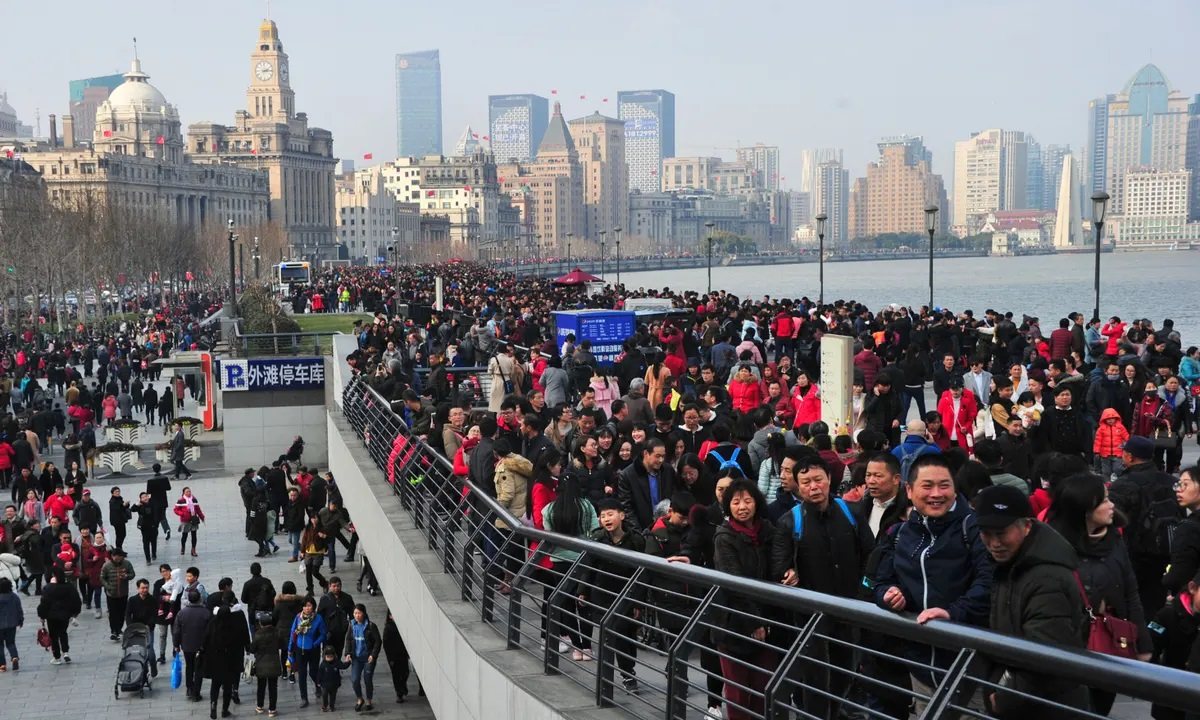
Overpopulation is a pressing issue that affects various countries around the world, but one nation that often comes to mind when discussing this topic is China. With a population of over 1.4 billion people, China is the most populous country in the world. The rapid increase in population has led to various challenges and implications for this Asian giant.
In this article, we will explore 15 facts about overpopulation in China, shedding light on the magnitude of the issue and its repercussions. From the causes and consequences to the measures taken by the government to address the problem, we will delve into the complexities of this ongoing crisis. So, let’s dive in and uncover the fascinating facts surrounding overpopulation in China.
Key Takeaways:
- China’s huge population, over 1.4 billion, creates challenges like crowded cities and strain on resources. Efforts to control population growth have had unintended consequences, like a gender imbalance.
- Overpopulation in China affects the environment, healthcare, and education. To solve this complex issue, China needs a comprehensive approach focusing on education, healthcare, employment, and environmental sustainability.
China is the most populous country in the world, with over 1.4 billion people.
China’s population is more than four times that of the United States, making it a significant contributor to global overpopulation.
The one-child policy was implemented in China from 1979 to 2015.
In an effort to control population growth, the Chinese government limited most families to having only one child. This policy had a profound impact on China’s population dynamics.
Despite the one-child policy, China still faces overpopulation challenges.
The high population growth rate prior to the implementation of the policy has led to a large cohort of young people, contributing to the ongoing issue of overpopulation in China.
Rapid urbanization has exacerbated overpopulation in Chinese cities.
Millions of people flock to urban areas in search of better job opportunities and a higher standard of living. This influx of people has strained infrastructure and resources, leading to overcrowding in cities.
The floating population is a significant demographic segment in China.
Often referred to as “migrant workers,” the floating population consists of individuals who move from rural areas to cities in search of employment. These individuals add additional pressure to urban areas already struggling with overpopulation.
Overpopulation has negative impacts on the environment in China.
The high demand for resources, such as water and energy, puts a strain on the environment and contributes to pollution and ecological degradation.
China’s aging population poses challenges for dealing with overpopulation.
With a large number of individuals reaching retirement age and a declining birth rate, China faces the dual challenges of an aging population and the need to address overpopulation.
The “hukou” system restricts population mobility in China.
Under China’s household registration system, individuals are tied to their place of origin and face challenges when attempting to relocate to urban areas. This limitation exacerbates overpopulation in rural areas and puts additional strain on resources.
Efforts to combat overpopulation in China have included incentives for small families.
The government has implemented various policies, such as offering financial rewards and benefits to families that adhere to the one-child policy or have fewer children. These measures aim to reduce population growth rates.
China’s population control measures have had unintended consequences.
The one-child policy led to a disproportionate number of male births, as families preferred to have sons. This has created a gender imbalance and social issues in Chinese society.
China’s overpopulation has implications for global resources and sustainability.
As the world’s largest population, China’s demand for resources has global ramifications, impacting issues such as climate change, deforestation, and water scarcity.
Overpopulation in China has led to overcrowded schools and strained education systems.
The large population puts pressure on educational institutions to accommodate all students, resulting in overcrowded classrooms and diminished educational resources.
Rising healthcare costs and accessibility challenges are associated with overpopulation in China.
With such a large population, providing affordable and accessible healthcare becomes increasingly difficult, leading to long wait times, limited resources, and rising costs.
Migration from rural to urban areas has contributed to overpopulation in Chinese cities.
Rural areas face economic hardships and limited job opportunities, leading many individuals to seek a better life in urban areas. This migration further strains the already overpopulated cities.
China’s overpopulation issue requires a multifaceted approach for sustainable solutions.
Addressing overpopulation in China necessitates strategies that focus on education, healthcare, employment, and environmental sustainability. Only through comprehensive measures can the country effectively manage its population growth and create a better future.
Conclusion
Overpopulation in China is a complex issue that has far-reaching implications for the country and the world. With a population of over 1.4 billion people, China’s rapid population growth has led to numerous challenges, including strain on resources, environmental degradation, and socio-economic issues.The Chinese government has implemented various measures to address overpopulation, such as the one-child policy and family planning initiatives. While these efforts have had some success in curbing population growth, they have also come with their own set of consequences, including an aging population and gender imbalance.It is crucial for China to continue finding sustainable solutions to tackle overpopulation and its associated challenges. This includes investing in education, promoting women’s empowerment, and implementing effective family planning programs. Additionally, efforts should be made to find a balance between economic development and population control, taking into consideration the well-being of both individuals and the planet.By addressing overpopulation in a comprehensive and sustainable manner, China can pave the way for a more balanced and prosperous future for its people and contribute to global efforts in ensuring a sustainable world for generations to come.
FAQs
Q: What is the current population of China?
A: The current population of China is estimated to be over 1.4 billion people.
Q: How has overpopulation impacted China?
A: Overpopulation in China has led to strain on resources, environmental degradation, and socio-economic challenges.
Q: What measures has the Chinese government taken to address overpopulation?
A: The Chinese government has implemented measures such as the one-child policy and family planning initiatives.
Q: What are the consequences of these measures?
A: The measures have had consequences including an aging population and gender imbalance.
Q: How can China tackle overpopulation in a sustainable manner?
A: China can invest in education, promote women’s empowerment, and implement effective family planning programs.
Q: What is the importance of addressing overpopulation?
A: Addressing overpopulation is crucial for a balanced and prosperous future for individuals and the planet.
Was this page helpful?
Our commitment to delivering trustworthy and engaging content is at the heart of what we do. Each fact on our site is contributed by real users like you, bringing a wealth of diverse insights and information. To ensure the highest standards of accuracy and reliability, our dedicated editors meticulously review each submission. This process guarantees that the facts we share are not only fascinating but also credible. Trust in our commitment to quality and authenticity as you explore and learn with us.


